
Scaling community programs the BackTrack way
How do you spread the impact of your program when it is rooted in your local community’s response to young people doing it tough? BackTrack has been finding out.

Since it started in 2006, BackTrack has been ‘keeping kids alive, out of jail, and chasing their hopes and dreams’.
Based in Armidale NSW, the organisation was founded by Bernie Shakeshaft, a straight-talking ex-jackaroo turned youth worker, to provide holistic, flexible and long-term support for some of the most disadvantaged and vulnerable young people in the community.
BackTrack has grown slowly but steadily from an empty shed, to an organisation that provides diversionary activities that build confidence and a sense of belonging, alternative education and practical vocational training, a residential home, and an employment-focused social enterprise – all with wrap around support to help youngsters heal from trauma and build their dreams.
More than one thousand 13-18 year-olds have now been through BackTrack.
As the saying goes, it takes a village to raise a child. For the 25 young people coming through the gate each day, there are a host of supporters, community members, funders and organisations that contribute to making BackTrack a reality.
“If I didn’t have BackTrack I’d be in lock up, incarcerated, or I’d be dead, six feet under.”
Early on, BackTrack proved the difference it was making. From 2006-2013 juvenile crime rates in Armidale fell by 52% (as compared with Tamworth where they increased 90%). Of the teenagers who came through the program, 85% went on to employment or further education.1
The results can also be seen through the stories of individuals whose lives have been turned around. Kanaya, who was homeless for three years and is now employed as a youth mentor, says “If I didn’t have BackTrack I’d be in lock up, incarcerated, or I’d be dead, six feet under.”2
Scaling what works
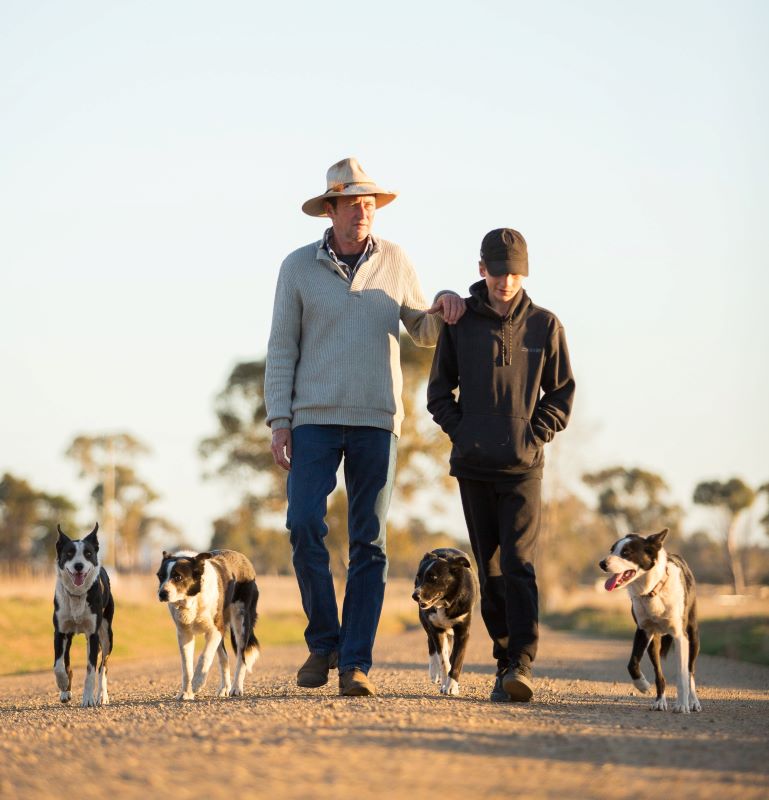
Shakeshaft has long held a vision of reaching more young people ‘falling through the cracks’. And he knows that they’re in every community.
With its increased exposure, BackTrack receives on average 100 enquiries each year from communities wanting to set up similar programs.
The issues that BackTrack seeks to resolve are Australia-wide: about one in five young Australians aged 15-24 are disengaged from full-time education or employment,3 one in five 12-17 year olds report high levels of psychological distress in the 12 months previous,4 and 28,000 young people 12-24 in Australia are homeless.5
As well as the suffering for these young people, there’s a huge cost to society. If just one of them ends up in jail, the justice system costs alone are staggering. A 2018-19 report quantified that a young person in juvenile detention in Australia costs on average $576k per annum.6 And in 2017–18, 80% had returned to a supervised sentence within 12 months.7
So for close to six years and backed by its funders, Backtrack has been looking to scale what it does. It calls this disseminating the ‘BackTrack Way’ – its approach to working with young people in community. (This was previously overseen by an arm of the organisation called BackTrack Everywhere.)
The challenge is that the solution has to be based and grown locally in each community. To achieve this, BackTrack has evolved a three-part process:
- Inspire and activate communities to support their young people having a tough time.
- Community assessment. Identify whether the BackTrack Way can help to address the needs of the community, and the key enablers for success (or their potential) are present.
- Inform and enable communities to create their own program.
In this article we look at what BackTrack identifies as the essence of its program and how it shares that essence – the BackTrack Way – with other regional and rural communities in a bid to reach as many young people falling through the cracks as possible. (To see how other programs have gone about replicating their model, see Making replication work)
The BackTrack Way
BackTrack’s first attempt to replicate its program was in 2015, when the organisation piloted a mentoring initiative in another community but there wasn’t insufficient community engagement.
Candice van Doosselaere, who leads BackTrack’s strategy for disseminating the BackTrack Way, describes it as a potent learning. “We realised that the magic of BackTrack is that it is a whole-of-community approach; it comes from the ground up, but also has the top end of town fully engaged as well.”
Since then, BackTrack has gotten clear about its essence. Van Doosselaere describes this as a precursor to working with communities.
a) Approaches to working with young people
BackTrack’s program is holistic, flexible, long term and highly tailored for each young person so that they get the support they need to ‘chase their hopes and dreams’. They have a rule that you can never get kicked out of BackTrack. In other words, the team ‘does whatever it takes, for as long as it takes’.
BackTrack’s youth work methodology is founded on the circle of courage model from the First Nations people in North America. This states that in order for young people to thrive, they need four components in their life to be in balance: belonging, independence, mastery and generosity.8
The youth work is also based on ‘choice theory’, meaning no young person is obliged to be at BackTrack; they choose to be there. Van Doosselaere explains that this means “we don’t chase kids; we draw them in.”
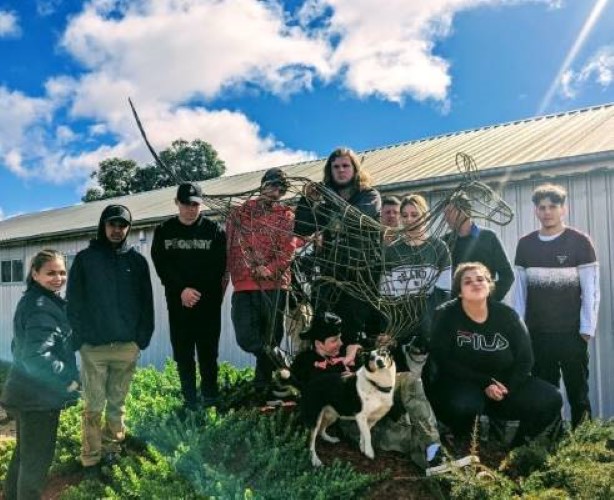
Another principle at BackTrack is also based on First Nations’ wisdom learnt from Indigenous trackers in the Northern Territory, where Shakeshaft had spent time. BackTrack calls this principle ‘80% out in front’.
“We spend a bit of time – 10% – looking at where the young person has been, 10% where they’re at, but 80% of the focus is on where they’re headed,” says Shakeshaft. “So, not letting the past define who they can become. That means helping work out where they want to be.”
“There’s a commonality in all the other [communities’] programs about being in touch with the natural world…”
One of the much publicised and effective BackTrack activities is dog training, and competing with working dogs. The young people are also ‘trained’ by the dogs, learning about themselves in the process. Shakeshaft has called the dogs ‘youth workers’.
“There’s a commonality in all the other [communities’] programs about being in touch with the natural world, even though not all use dogs,” says van Doosselaere.
“A lot of it is around taking the busyness out from the day-to-day – the phones – and getting back into nature, going camping, having a yarn around the fire. All of those things really help to ground and feed the soul,” says van Doosselaere.
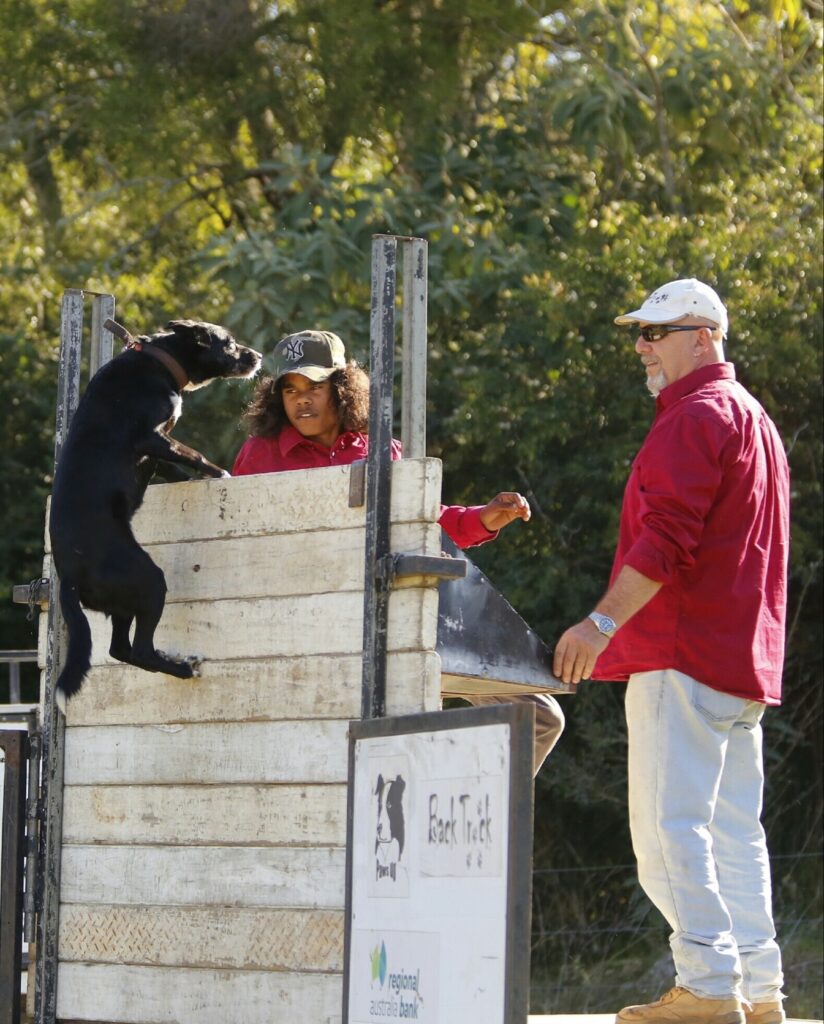
b) Integrated and embedded in the community
The BackTrack team provides what is needed directly or by collaborating with other organisations and individuals. Collaboration is another important feature of the program: whether that’s for accessing accommodation, drug and alcohol support, legal assistance, or elements of the core program.
“We put the young person first and find different ways of working with different organisations to make sure that we get the best outcome for young people who are having a tough time,” says van Doosselaere.
To achieve this level of collaboration, BackTrack is deeply embedded in the community, whether that be in how it works with the local justice system, education, or in creating pathways to employment for the young people.
“The whole community is on board: police, department of education, council, top end of town, local farmers and other businesses,” says van Doosselaere.
“… we need to be in a fair bit of control; we can’t rely on an external employer, it’s too risky.”

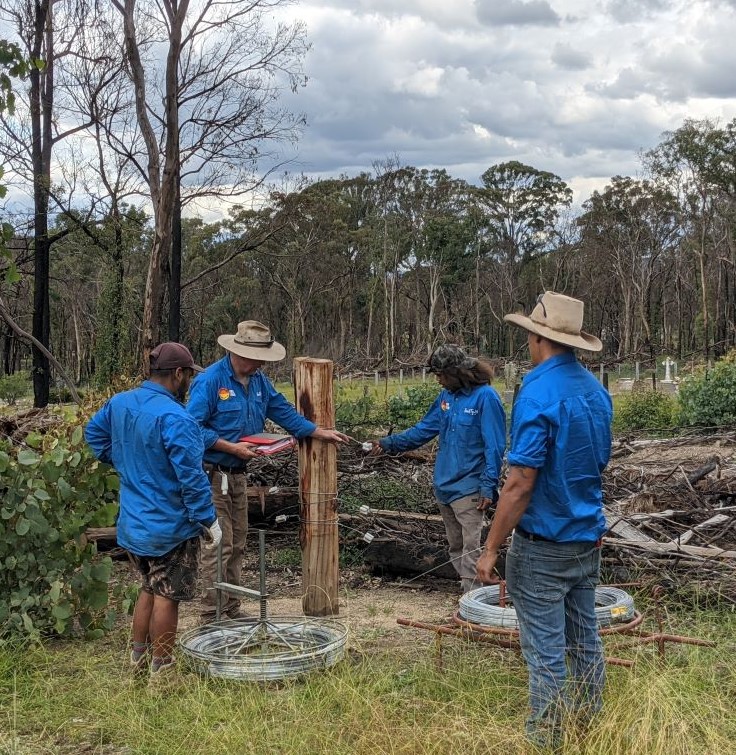
Local business and farms provide employment opportunities, as does the organisation’s social enterprise, BackTrack Works, set up in 2018 to provide practical on-the-job experience.
“Our solution is a social enterprise because at these early stages with these young people, we need to be in a fair bit of control; we can’t rely on an external employer, it’s too risky,” says Marcus Watson, Social Enterprise Manager.
BackTrack Works provides services in agriculture, construction and fabrication works throughout the New England region and has garnered a name for its bushfire and flood recovery work. To date it’s worked across seven local government areas.
It has about 20 young people through the gates any given day (17 FTE) with 32 aged between 15 and 24 years old on the books. Over 2019-20, it increased its workload; growing revenue 25% to $1.2m.
“We swim in our lane, playing to our strengths and relying on community for support.”
With just over half of the young people in the core program being of Aboriginal and Torres Strait Islander heritage, working closely with local Indigenous groups, communities and Elders is critical.
“We do have some youth workers who have Aboriginal and Torres Strait Islander heritage, but mostly what we do is connect in with the local community organisations,” says van Doosselaere.
“We aren’t an Indigenous organisation, we’re an organisation for young people having a hard time. We swim in our lane, playing to our strengths and relying on community for support. If a young Indigenous person is having a tough time connecting to themselves, we find that connecting to culture is a really good start; so we’ll often take them one on one either to the local Aboriginal organisations, or get one of the Uncles to take them out on country.”
“… no-one ‘owns’ the program. If anything, it’s owned by the community.”
Another aspect of being embedded in the community is BackTrack’s commitment to having multiple funding sources – “so no-one ‘owns’ the program. If anything, it’s owned by the community,” says van Doosselaere.
In 19-20, 82% of BackTrack Youth Works income (as distinct from BackTrack Works the social enterprise arm) was from donations and philanthropic grants; and only 7% from government grants.
Working with communities
In ‘scaling’ its work, BackTrack isn’t trying to replicate BackTrack, but instead support a community to adopt the BackTrack Way and create a local program. Over the last six years, it has learnt a lot about managing the fine balance between guiding communities to take on the BackTrack ‘model’ and ensuring that communities ‘own’ their programs.
1. Inspire and activate communities
The first step is inspiring and galvanising other communities to support their young people having a tough time. This is done chiefly through the documentary Backtrack Boys which has reached over 200,000 viewers on TV and at community screenings around the country as well as Back on Track, Bernie Shakeshaft’s book about his life and the organisation, and different media and speaking engagements.
It is this level of outreach that has generated the 100 enquiries a year from communities interested in the approach.
2. Assess the community
To develop a BackTrack style program, the community has to have some key components in place – or the potential for them – to grow.
Initial enquiries are first assessed on community need: what is the socio-economic profile of the town or region, and is there a cohort of young people who are disengaged from school and training and getting into trouble?
“…you’ve got to have that top end of town mentality as well.”
Then the BackTrack team assesses the appropriateness of the community’s plan, and whether there’s a champion or driver on the ground. This may be a youth worker or a ‘Bernie’ – but they also need someone with a connection to the cohort of kids having a hard time.
They also assess for funding, community support and an ambassador that can help shift things at a higher level. “Whether that’s a director of education, a superintendent chief of police or the mayor,” says Shakeshaft, “you’ve got to have that top end of town mentality as well.”
When the initial enquiry is an individual or group of individuals, BackTrack also assesses whether they have enough business acumen, or whether it is better to slot in with another local organisation already in place.
Part of BackTrack’s assessment is also ensuring that the initial inquiries have a good understanding of BackTrack’s approach and want to embed it to support their local young people having a tough time. Open days help to provide a deeper understanding of what BackTrack does and how.
3. Inform and enable communities to embed the BackTrack Way
For the communities that are considered a good fit and ready, the final stage is enabling them to embed the BackTrack Way. This is done initially by supporting them to develop the enablers described above, but also by disseminating BackTrack’s approach. It does this through the ‘Tracker Network’, a network of participating communities.
So far six communities (Dubbo, Broken Hill, Lake Cargelligo, Hawkesbury, Moree and Macksville) have joined and there are a few more in the pipeline.
“One thing BackTrack does well is supporting the other Tracker leaders to think big and to work collaboratively.”
The ‘official’ network was started in September 2020, and van Doosselaere says they are already seeing huge benefits from the peer support. “One thing BackTrack does well is supporting the other Tracker leaders to think big and to work collaboratively.”
The network meets monthly, alternating between online sessions and visits to one of the Tracker’s sites where they get to look at how that organisation works on the ground. These in-person site visits are an opportunity for intensive workshops on key areas, including youth work methodology, measurement and evaluation, leadership support, funding and sustainability. In between visits, Trackers have access to peer support anytime.
The network is BackTrack’s answer to balancing the demands of ‘guiding’ new communities while keeping its core capacity focused on the program in Armidale and responding to changing needs there.
The network helps share the load of disseminating the BackTrack Way as a number of organisations have been working with BackTrack for a few years now.
It also facilitates a process of empowering others while not being over controlling.
There is no replication or service fee for participating organisations. BackTrack relies heavily on the philanthropists who are inspired by BackTrack’s vision and have been prepared to support it.
“…if we can help fast track employment opportunities for the young people that they’re helping… we’re happy to do that.”
Although not a critical element as far as its essence goes, getting kids into jobs has always been what BackTrack does. And it’s a priority for Tracker communities.
Watson at BackTrack Works says that “When we are working alongside the Tracker communities we find they ultimately want to support young people in to ongoing employment pathways. Following the BackTrack culture we provide support to our network sharing what we have learned.”
“Some of these [Trackers] are individuals in a community trying to dig something out of the ground, so if we can help fast track employment opportunities for the young people that they’re helping until they’re geared up, we’re happy to do that.”
Recently, BackTrack Works secured recovery funding after the floods in Macksville and included ShoreTrack, a new Tracker organisation on the project. BackTrack Works has also included young people from other Tracker communities in their bushfire recovery fencing crews enabling them to gain hands on work experience and be included in giving back to communities in need.
“The biggest challenge… is getting the right model and the right people in place.”
Summarising the approach to disseminating the BackTrack Way, Shakeshaft says that while each town and community will be different, it’s about making sure the program has a sustainable funding model, is filling a gap in the system, is long term and is embedded in the community.
“The biggest challenge in achieving this scaling is getting the right model and the right people in place. These youth work models take time to build and then you’re there for the long haul.”
A closer look at one of the Trackers, LeaderLife
LeaderLife began its work in 2011 in an East Dubbo community facing substantial disadvantage and trauma. Its mission is ‘to grow our community by helping kids doing it tough live their best life.’ While not an Indigenous program, over 90% of those accessing it are Aboriginal or Torres Strait Islander.
LeaderLife founder and CEO, Joh Leader, was introduced to BackTrack in 2016 through a local collaboration seeking to reduce the number of Indigenous young people in jail. They are one of the oldest members of the Tracker community.
“As soon as we started to understand BackTrack’s underlying principles, we knew there were synergies, especially the concept of ‘draw and reward rather than push and punish,’” says Leader.
“… started a working lime farm as a social enterprise which we never would have done without BackTrack inspiring us.”
LeaderLife has adopted a number of BackTrack’s philosophies including the circle of courage model, having a strategy for attracting long term, flexible and sustainable funding, and working in collaboration with those in the community who also want the best for young people.
“We’ve introduced holistic wrap around services for 13-18 year old boys having a tough time, and in 2020 started a working lime farm as a social enterprise which we never would have done without BackTrack inspiring us.”
Maintaining the BackTrack Way
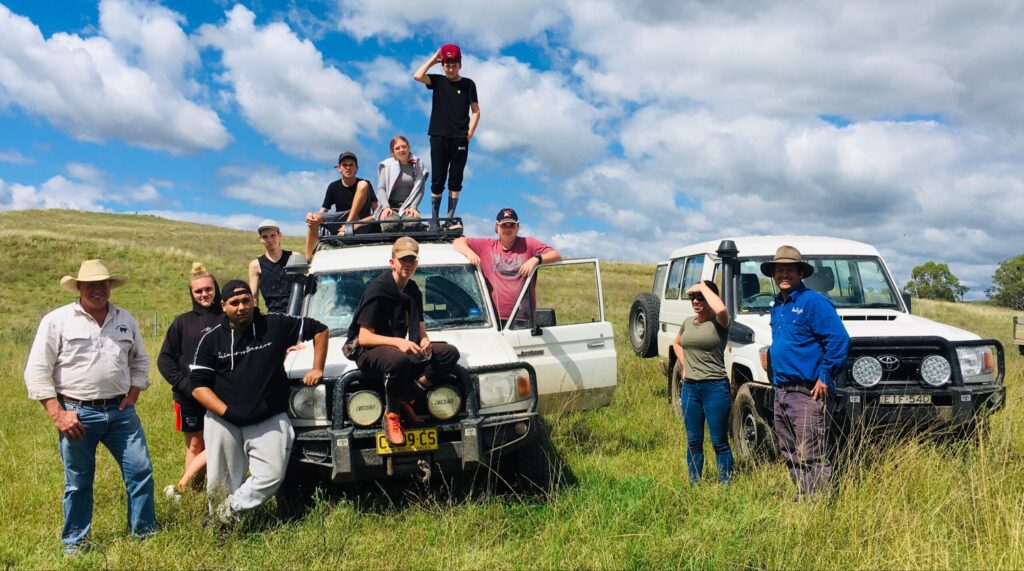
What does the future hold for BackTrack?
Number one is to ensure that Armidale continues to shine as a centre of excellence. This meant capping numbers in spite of a long waiting list of young people from around the country; they currently have 40 young people on the books and average 25 on any one day.
“We’ve got the size of the model about right for the Armidale population, so now it’s about maintaining that, and improving the service,” says Shakeshaft.
Plans include buying a farm for training and to involve other communities; and to have accommodation for girls given their numbers are growing.
Otherwise, it’s about pursuing the mission: to help as many kids having a hard time as possible, says Shakeshaft.
“It’s helping other towns and communities get started and set up using the same fundamental principles.”
“It’s striking that balance between maintaining the integrity of our model… and ensuring communities ‘own’ their programs.”
As the number of communities grow, ensuring the model’s integrity will be the challenge.
Van Doosselaere says, “The Tracker Network has been small enough to keep across what all the communities are doing. I speak to most of them every two weeks, so at the moment it’s easy to track. Our next step is to look forward and lay sustainable foundations because the number of communities coming to us for support is only set to grow.
“We’re thinking about how we empower organisations to launch programs that make sense for their own communities, while still equipping them with the most essential components of BackTrack’s approach. It’s striking that balance between maintaining the integrity of our model, while staying flexible and ensuring communities ‘own’ their programs.”
SVA supported BackTrack for 3 years as part of its ventures program.
Author: David Williams
1 National Drug and Alcohol Research Centre, Teens program halves juvenile crime in country town, Dec 2014
2 You Tube: Australia’s Local Hero
3 Australian Bureau of Statistics. (2018). 6227.0 – Education and Work, Australia, May 2018. Canberra: Australian Bureau of Statistics
5 On Census night 2016 27,680 12-24 year olds were counted as homeless (ABS, 2016)
6 ‘Nationally in 2018-19, the average cost per day per young person subject to detention-based supervision was $1579.’ Pg 17.25, Section 17 Youth Justice Services – Report on Government Services 2020
7 For those aged 10–16 in 2017–18 and released from sentenced detention, 61% returned within 6 months, and 80% within 12 months. Australian Institue of Health and Welfare, Young people returning to sentenced youth justice supervision 2018-19




